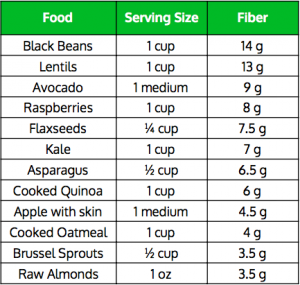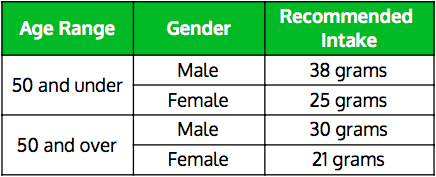Most Americans are not consuming enough fiber on a daily basis. It’s not too surprising since the standard American diet is high in meat, dairy, and processed foods, all of which are usually quite low in fiber. Dietary fiber is an essential nutrient. But we need to get it through food because it cannot be produced by our bodies. Consuming enough fiber can help reduce the risk of several chronic diseases, including heart disease, cancer, diabetes, and obesity.
What is fiber and what does fiber do?
Fiber is defined as non-digestible carbohydrates that are mainly found in plants. There are two types of fiber that each function differently in the body.
Soluble fiber absorbs water to form a gel-like and sticky substance in the digestive system. It is a type of fiber that binds to LDL cholesterol and sugar to slow down or prevent the absorption of them into the bloodstream. Soluble fiber is known to be beneficial for people with diabetes and high cholesterol. Adequate consumption of soluble fiber can also reduce the risk of diabetes and heart disease.
Insoluble fiber does not absorb or dissolve in water. It is a type of fiber that stays intact and promotes regular bowel movements by adding bulk to your stool. Insoluble fiber puts pressure on colon walls to stimulate bowel movements. Adequate consumption of insoluble fiber can help reduce the risk of constipation, diverticular disease, and colon cancer.
What foods are some good sources of fiber?

Fiber-rich foods are mainly plant-based. There are several other foods that will give you just as much fiber as the foods listed in the table to the left. As long as you consume enough plant-based whole foods you should be able to easily meet your daily fiber needs.
How much fiber do you need?
There are two ways to figure out how much fiber you should be getting.
1- Recommendation based on age and gender:

2- Recommendation based on calorie consumption:
14 grams per 1,000 calories
3 Easy Ways to Increase Fiber Consumption
1- Start your day with whole grains
Try starting your day with a hearty bowl of oats with nuts and berries, you’ll not only get at least 5g of fiber, but also a good amount of protein, healthy fats, and some antioxidants.
2- Snack on fruites and/or vegetables
Try snacking on an apple with almond butter when you get hungry between meals! You’ll get about 5g of fiber for medium to large apple and about 1.5g of fiber from a tablespoon of almond butter!
3- Replace animal protein for plant protein
Try making your favorite dishes using tempeh as the main protein instead of meat! Did you know 3 ounces of chicken and beef both contain 0g of fiber while 3 ounces of tempeh contains 7g?
2 Ways to Avoid Discomfort When Increasing Fiber Intake
1- Grdually start increasing fiber consumption
It’s not recommended to increase your fiber consumption too quickly, because it can lead to bloating and abdominal cramping.
2- Drink more water
Both soluble and insoluble fiber use water – Soluble fiber absorbs water to become a gel-like substance and insoluble fiber pulls water from the intestines and retains it to add bulk and moisture to your stool. Not getting enough water while increasing fiber consumption can lead to dehydration and constipation.
Learn more about Oh My Green and be sure to join our community on Facebook, Twitter, and Instagram. Find us as @OhMyGreenHQ.